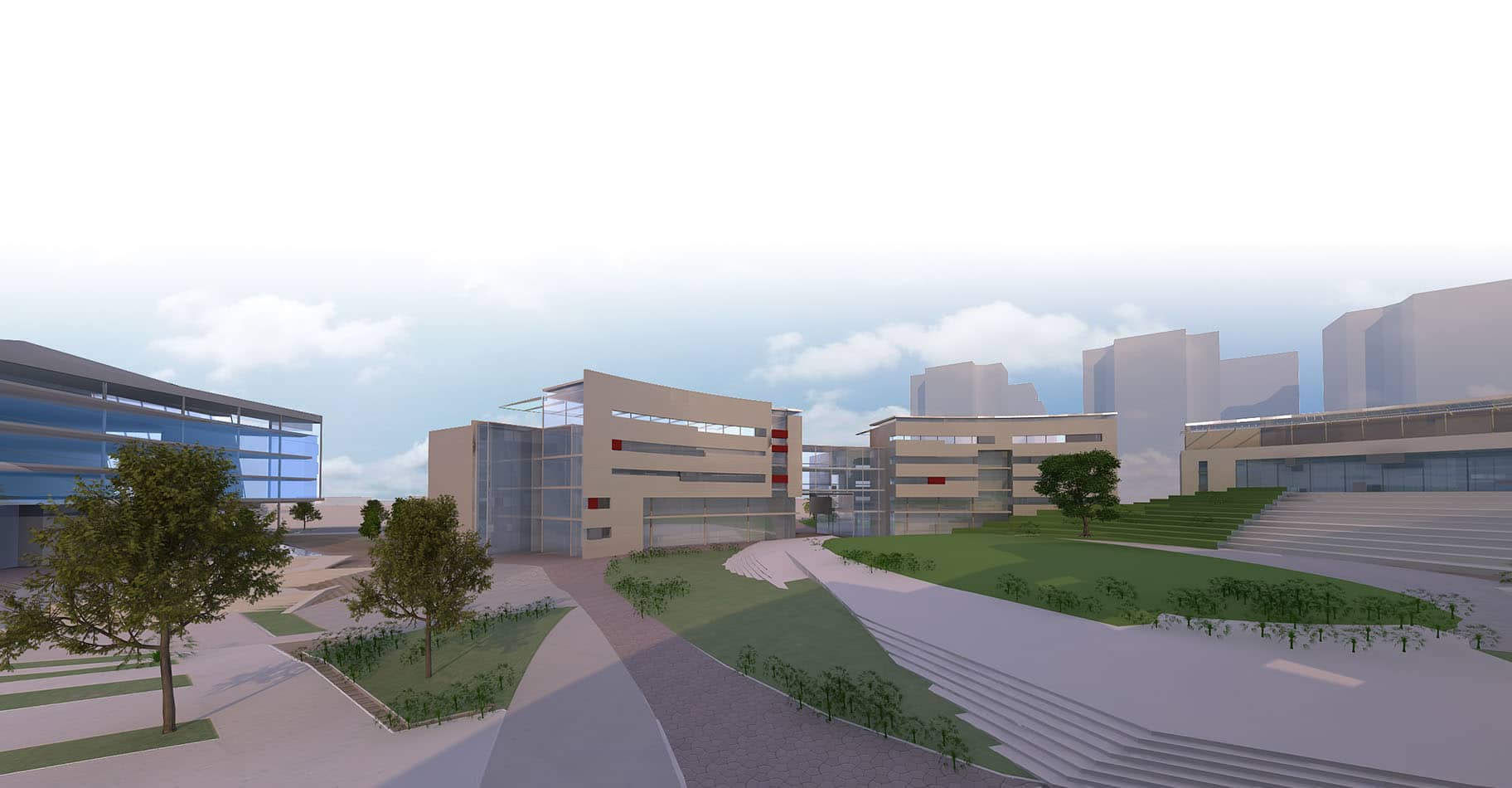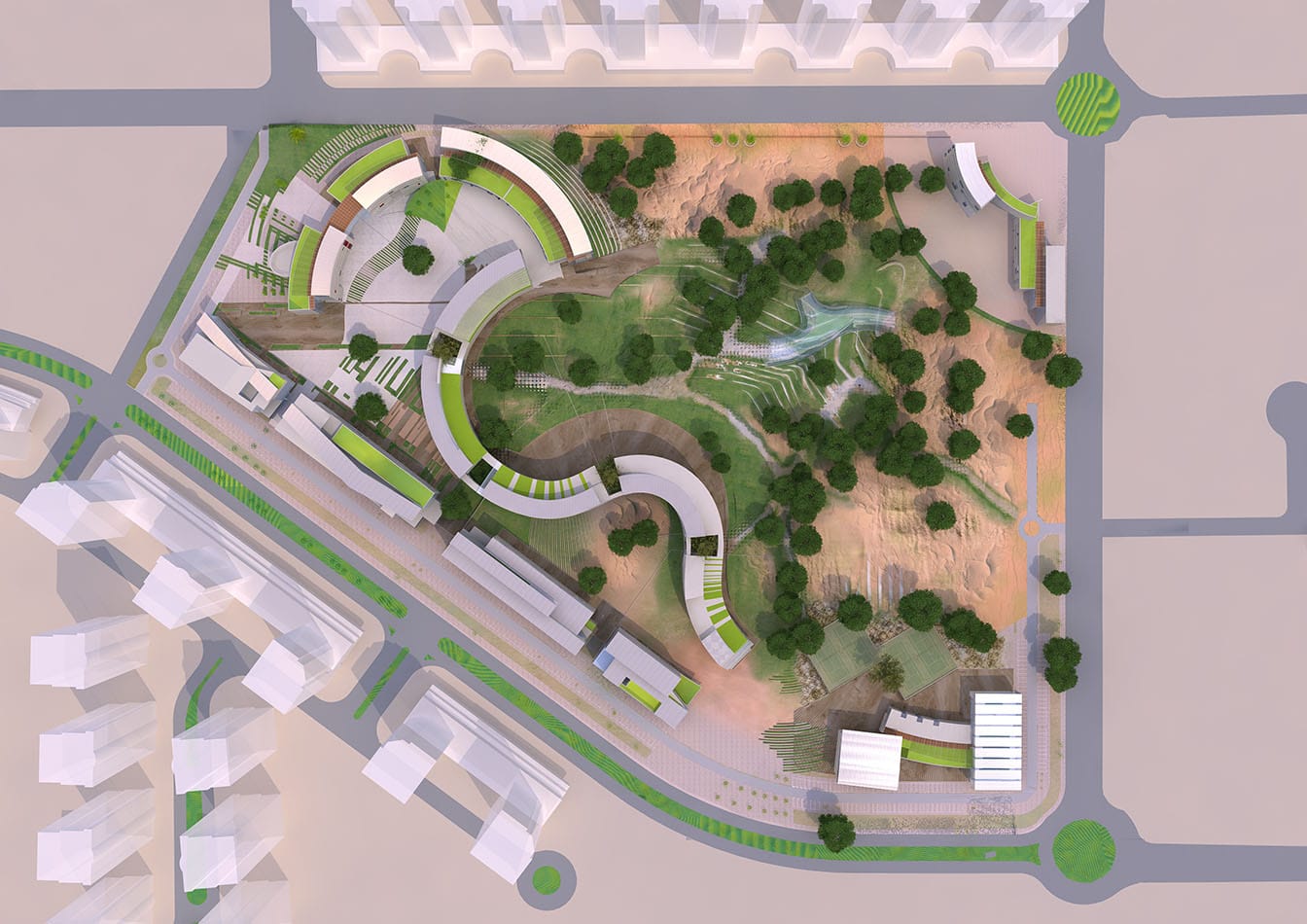Ashdod Academic Campus
Ashdod, Israel
Program: Academic college.
Client: Ashdod Municipality
Area: 120,000 sqm
Status: Proposal 2011
Publication
Ha`Aretz – Sience & Enviorment, by Noam Dvir, 04/03/2012
The buildings’ layout along with the circulation through and around the campus creates a hierarchy of public spaces throughout the campus which allows a wide range of experience and usability of the space: From the sycamore reservation that has more of an urban scale to the more intimate spaces where students can relax and study between classes. One can choose to quickly move between the buildings without being late for class, or take a leisurely walk through the sycamore trees.
Relationship with the ground
The building layout and composition were characterized by the nature of the site: An urban approach was taken in the southwest border of the site connecting it back to the city where a more of a free-flowing approach, following the natural landscape of the site, was taken inwards into the campus and the Sycamore Reserve. The buildings on campus are fairly simple and modular thus allowing construction to take place in stages according to the needs and functional flexibility and can be done swiftly and with a low budget. The fact that construction can be done in stages from the northwest toward the southeast also allows minimal intervention in the reserve and reduces the landscaping work accordingly.
The scenic route
Throughout the campus, a scenic route was planned between the many trees allowing the presence and experience of the reserve to be an integral part of the academic life. The green route allows for a nice reflective walk along the running tracks located in nature that function as part of the sports culture on campus and allows for special relationships between people and between man and nature.
In the center of the reserve, a visitors center and dunes research center are planned as part of the academic campus. This center may also function as a place for the restoration of the unique species in nature, and will reconnect the students and children of Ashdod back to the campus and to the environment. The building of the center is designed to integrate into the landscape as much as possible.







